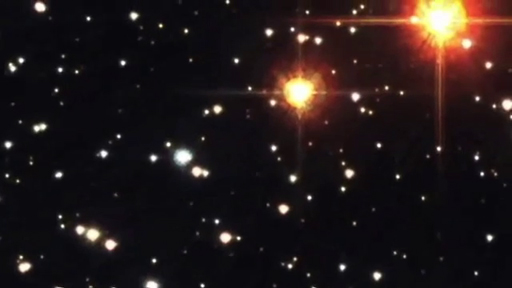2.3.5 Supergiant stars
What happens to supergiant stars?

Transcript
As with low mass, Sun-type stars, the extra sources of energy cause the star to expand and then cool, although their higher temperatures mean that they usually turn into hot blue or blue-white supergiants.
A great example of a supergiant is Rigel from the Orion constellation.
On the graph in Figure 14, the evolutionary path of a massive star is shown. The hot, blue supergiant evolves to even greater sizes and cooler temperatures, passing through both yellow and blue supergiant phases.
The largest of all known stars are the red supergiants, like Betelgeuse in the Orion constellation. If a red supergiant were placed in the centre of our Solar System, its radius would reach out past Jupiter!
The video explains what happens when the temperature rises further. You can read more about this process in the next section.

